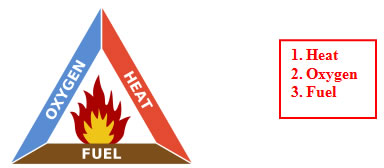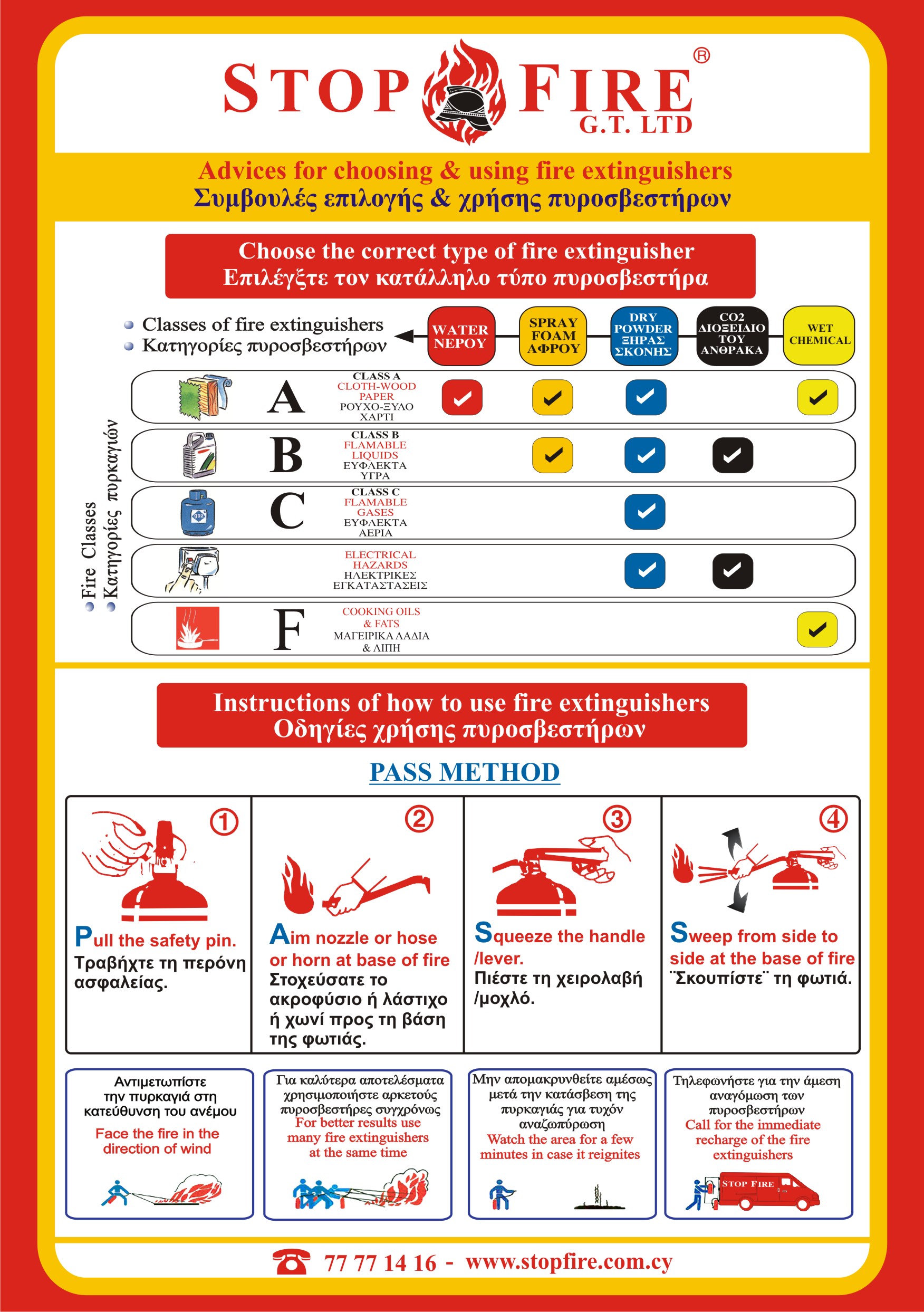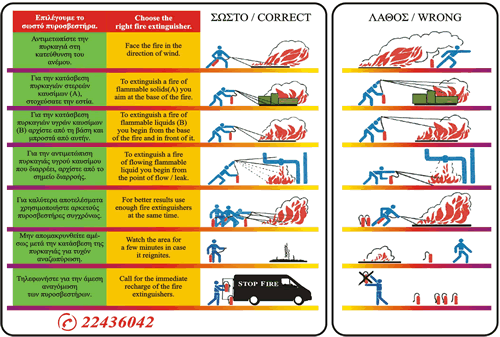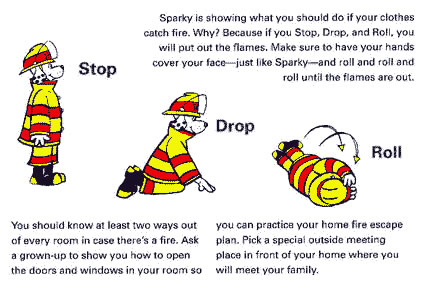what is fire
Fire can destroy your house and all of your possession¬s in less than an hour, and it can reduce an entire forest to a pile of ash and charred wood. It's also a terrifying weapon, with nearly unlimited destructive power. Fire kills more people every year than any other force of nature.
But at the same time, fire is extraordinarily helpful. It gave humans the first form of portable light and heat. It also gave us the ability to cook food, forge metal tools, form pottery, harden bricks and drive power plants. There are few things that have done as much harm to humanity as fire, and few things that have done as much good. It is certainly one of the most important ¬forces in human history.
Typically, fire comes from a chemical reaction between oxygen in the atmosphere and some sort of fuel (wood or gasoline, for example). Of course, wood and gasoline don't spontaneously catch on fire just because they're surrounded by oxygen. For the combustion reaction to happen, you have to heat the fuel to its ignition temperature.
The 3 elements (in red) is known as the Fire Triangle and they are essential in order for fires to exist.

By removing any of these 3 elements, the fire will stop. So fire extinguishers are designed to remove one of these elements by applying an agent that either cools the burning fuel, or removes or displaces the surrounding oxygen.
The European Standard BS EN3 specifies that All Fire Extinguisher Bodies are to be coloured "RED" regardless of the contents of the extinguisher.
All Extinguishers now have a 5% area of the label that is Colour Coded which denotes its contents.

> Water Extinguishers
Water extinguishers are filled with regular tap water. The best way to remove heat is to dump water on the fire but, depending on the type of fire, this is not always the best option.
> Foam Extinguishers
The foam has a blanketing effect that knocks down the flames, smothering & cooling them, thus preventing re-ignition of the flammable vapours by sealing the surface of the solution.
> Dry Powder Extinguishers
Dry powder fire extinguishers interrupt the chemical reaction of the fire by coating the fuel with a thin layer of powder, separating the fuel from the surrounding oxygen.
> Carbon Dioxide (CO2) extinguishers
CO2 extinguishers contain carbon dioxide, a non-flammable gas. CO2 is heavier than oxygen so these extinguishers work by displacing or taking away oxygen from the surrounding area. CO2 is also very cold so it also works by cooling the fuel. CO2 is non corrosive and non conductive.
how fire extinguishers work (PASS)
Pull the Pin at the top of the extinguisher. The pin releases a locking mechanism and will allow you to discharge the extinguisher.
Aim at the base of the fire, not the flames. This is important - in order to put out the fire, you must extinguish the fuel.
Squeeze the lever slowly. This will release the extinguishing agent in the extinguisher. If the handle is released, the discharge will stop.
Sweep from side to side. Using a sweeping motion, move the fire extinguisher back and forth until the fire is completely out. Operate the extinguisher from a safe distance, several feet away, and then move towards the fire once it starts to diminish.
Remember: Aim at the base of the fire, not at the flames.
A typical fire extinguisher contains 10 seconds of extinguishing power. This could be less if it has already been partially discharged.
Once the fire is out, don't walk away! Watch the area for a few minutes in case it re-ignites. Recharge the extinguisher immediately after use.
All fires can be very dangerous and life-threatening. Your safety should always be your primary concern when attempting to fight a fire.

Before deciding to fight a fire, be certain that:
- The fire is small and not spreading. A fire can double in size within seconds.
- You have the proper fire extinguisher for what is burning.
- The fire won't block your exit if you can't control it. A good way to ensure this is to keep the exit at your back.
- You know your fire extinguisher works. Assure the pressure is at the recommended level. On extinguishers equipped with a gauge, the needle should be in the green zone - not too high and not too low.
- You know how to use your fire extinguisher. There's not enough time to read instructions when a fire occurs.
Never Fight A Fire If:
- The fire is spreading rapidly. Only use a fire extinguisher when the fire is in its early stages. If the fire is already spreading quickly, evacuate and call the fire department.
- You don't know what is burning. Unless you know what is burning, you won't know what type of fire extinguisher to use. Even if you have an ABC extinguisher, there could be something that will explode or produce highly toxic smoke.
- You don't have the proper fire extinguisher. The wrong type of extinguisher can be dangerous or life-threatening.
- There is too much smoke or you are at risk of inhaling smoke. Seven out of ten fire-related deaths occur from breathing poisonous gases produced by the fire.
Any sort of fire will produce some amount of carbon monoxide, the most deadly gas produced by a fire. Materials such as wool, silk, nylon and some plastics can produce other highly toxic gases such as carbon dioxide, hydrogen cyanide, or hydrogen chloride. Beware - all of these can be fatal.
Smoke inhalation or exposure to fire itself can be life threatening.

What is the difference between a fire extinguisher inspection and fire extinguisher maintenance?
INSPECTION
An inspection is a “quick check?to give reasonable assurance that a fire extinguisher is available, fully charged and operable. The value of an inspection lies in the frequency, regularity, and thoroughness with which it is conducted. The frequency will vary from hourly to monthly, based on the needs of the situation. Inspections should always be conducted when extinguishers are initially placed in service and thereafter at approximately 30-day intervals.
MAINTENANCE
Fire extinguishers should be maintained at least once a year. Maintenance is a “thorough check?of the extinguisher. It is intended to give maximum assurance that an extinguisher will operate effectively and safely. It includes a thorough examination and any necessary repair, recharging or replacement.
fire prevention
Of course, the best way to practice fire safety is to make sure a fire doesn't break out in the first place. That means you should always be aware of potential hazards in your home. Start by keeping these tips in mind.
> check all electrical appliances, cords, and outlets
- Are your electrical appliances in good condition, without loose or frayed cords or plugs?
- Are your outlets overloaded with plugs from the TV, computer, printer, video game system, and stereo?
- Are you overusing an extension cord?
- Do the light fixtures in your home contain bulbs that are the correct wattage?
- Does your home contain GFCIs (ground-fault circuit interrupters) and/or AFCIs (arc-fault circuit interrupters), which prevent electrical shock and fire by shutting off faulty circuits?
Look around your house for potential problems. And unless you're a trained electrician, be careful about do-it-yourself electrical projects. Studies have shown that many home fires are caused by improper installation of electrical devices.
Other tips:
- Replace or professionally repair any appliances that spark, smell unusual, or overheat.
- Don't run electrical wires under rugs.
- Make sure lamps and night-lights are not touching bedspreads, drapes, or other fabrics.
- Use caution when using electric blankets.
- Don't let kids use kitchen appliances by themselves and supervise any art or science projects that involve electrical devices.
- Cover any outlets that are not in use with plastic safety covers if you have toddlers or young children in your home.
> be especially vigilant about portable heaters
The number of residential fires always goes up during colder months, peaking between December and February. Portable space heaters substantially contribute to this increase. Before plugging in your space heater, make sure you know how to use it safely:
- Carefully read the directions for its use.
- Never place a space heater where a child or pet could accidentally knock it over.
- Never place a space heater too close to a bed, especially a child's bed.
- Keep newspapers, magazines, and fabrics from curtains, clothes, or bedding away from space heaters, radiators, and fireplaces.
- Heaters should be at least 3 feet from anything flammable.
> be careful in the kitchen
Did you know that cooking is the leading cause of home fires in the United States? The kitchen is rife with ways for a fire to start: food left unsupervised on a stove or in an oven or microwave; grease spills; a dish towel too close to the burner; a toaster or toaster oven flare-up; a coffee pot accidentally left on. Always supervise your child while cooking, and make sure to practice safe cooking habits ?like turning all pot handles in so they can't be accidentally knocked over and not wearing loose-fitting clothing that could catch fire around the stove.
Check out the fireplace
Fireplaces should be kept clean and covered with a screen to keep sparks from jumping out. Only wood should be burned in the fireplace ?paper and other materials can escape while burning and ignite nearby items. Never leave a fire burning unattended, and make sure a fire is completely extinguished before leaving the house or going to bed. Have the chimney professionally cleaned once a year.
Beware of cigarettes
According to the National Fire Prevention Association (NFPA), cigarettes are the No. 1 cause of fire deaths in the United States and Canada, killing about 1,000 people per year. Most are started when ashes or butts fall into couches and chairs. If you smoke, be especially careful around upholstered furniture, never smoke in bed, and be sure cigarettes are completely out before you toss them into the trash.
> never let your child play with matches and lighters
You've heard it again and again, but children playing with matches are still the leading cause of fire-related deaths and injuries for kids younger than 5. Always keep matches and lighters out of children's reach. Store flammable materials such as gasoline, kerosene, and flammable cleaning supplies outside of your home and away from children.
> use candles safely
As decorative candles become more popular, candle fires are on the rise. If you light candles, keep them out of reach of kids and pets, away from curtains and furniture, and extinguish them before you go to bed. Make sure candles are in sturdy holders made of non-flammable material that won't tip over. Don't let older kids and teens use candles unsupervised in their rooms.
> be aware of holiday dangers
Around the holidays, there are even more potential fire hazards to think about. If you use a real Christmas tree in your home, make sure to water it daily ?electric lights strung on a dried-out tree are a recipe for disaster. All lights and lighted window ornaments should be inspected every year to make sure that cords are not worn or frayed, and all candles should be used with care. According to the NFPA, the number of fires started by candles nearly doubles during the month of December.
household tips
> make sure all smoke alarms are in working order
It's a fact ?having a smoke alarm in the house cuts your risk of dying in a fire in half. If your home doesn't have smoke alarms, now is the time to install them on every level of your home and in each bedroom. If possible, choose one with a 10-year lithium battery. If your smoke alarm uses regular batteries, remember to replace them every year (hint: change your batteries when you change your clock back from Daylight Saving Time in the fall). Test your smoke alarms monthly, and be sure your kids are familiar with the sound of the alarm. Almost 60% of all fatal residential fires occur in homes that don't have smoke alarms, so this may be the single most important thing you can do to keep your family safe from fires.
Because smoke rises, smoke detectors should always be placed on ceilings or high on walls. If a smoke detector near the kitchen goes off while you're cooking, do not take the battery out of it ?you may forget to replace it. Open the doors and windows instead. Or you might consider installing a rate-of-rise heat detector for places like the kitchen, where smoke or steam from cooking are likely to cause false alarms. These alarms can sense when the temperature reaches a set critical point or when it rises by more than a certain number of degrees a minute.
If you're having a new home built or remodeling an older home, you may also want to consider adding a home sprinkler system. These are already found in many apartment buildings and dormitories.
> keep fire extinguishers handy
Be prepared for any accidents by having fire extinguishers strategically placed around your house ?at least one on each floor and in the kitchen (this one should be an all-purpose extinguisher, meaning it can be used on grease and electrical fires), the basement, the garage, or workshop area. Keep them out of reach of children.
Fire extinguishers are best used when a fire is contained in a small area, like a wastebasket, and when the fire department has already been called. The NFPA says to remember the word PASS when operating an extinguisher:
- Pull the pin. Release the lock with the nozzle pointing away from you.
- Aim low. Point the extinguisher at the base of the fire.
- Squeeze the lever slowly and evenly.
- Sweep the nozzle from side to side.
The best time to learn how to use the fire extinguisher is now, before you ever need it (if you have any questions, the local fire department can help). Fire extinguishers have gauges on them indicating when they need to be replaced and should be checked regularly to make sure they are still functional.
If you're ever in doubt about whether to use an extinguisher on a fire, don't try it. Instead, leave the house immediately and call the fire department.
> plan escape routes
Planned escape routes are a necessity, especially if a fire were to occur during the night. Go through each room in your house and think about the possible exits. You should have in your mind two escape routes from each room, in case one is blocked by fire. Inspect the room to make sure that furniture and other objects are not blocking doorways or windows. Make sure that the windows in every room are easy to open and are not painted over or nailed shut ?remember, these may be your only way out in a fire. If you live in an apartment building, make sure any safety bars on windows are removable in an emergency. Be sure to know the locations of the closest stairwells or fire escapes and where they lead.
If your house is more than one story tall or if you live above the ground floor of an apartment building, an escape ladder is an important safety feature. You should have one escape ladder made of fire-safe material (aluminum, not rope) in each upper-story bedroom that is occupied by a person who is capable of using it. Like fire extinguishers, escape ladders should be operated by adults only. The ladder must be approved by an independent testing laboratory; it's length must be appropriate for your home, and it must support the weight of the heaviest adult in the house.
Be sure any babysitters in your home know all escape routes and plans in case of a fire.
> teach children the facts about fire
Unfortunately, many kids will try to hide from a fire, often in a closet, under a bed, or in a corner. But if taught basic fire facts, they'd be better able to protect themselves. Teach your child that fires spread quickly, that most fire-related deaths are not from burns but from smoke inhalation, and that dangerous fumes can overcome a person in just a few minutes.
Kids should learn to:
- cover their mouths and noses with a moist towel or an article of clothing to keep out dangerous fumes while evacuating
- crawl under the smoke to safety, staying as low to the ground as possible (smoke always rises)
- touch any door (not the doorknob) to see if it is hot, and if it is, not to open it ?find another exit
- locate the nearest stairway marked "Fire Exit" if they live in an apartment building, or a fire escape if the stairway isn't accessible ?kids should know to always avoid elevators during a fire
- never stop to take personal belongings or pets or to make a phone call (even to 911) while evacuating
- never go back into a burning building once safely outside
- stop, drop, and roll to extinguish flames if an article of clothing catches on fire
Kids should also always be dressed for bed in flame-retardant sleepwear.
> practice fire drills at home
Kids have fire drills at school and adults have them at work. Why shouldn't you have them at home, too? Fires are frightening and can cause panic. By rehearsing different scenarios, your family will be less likely to waste precious time trying to figure out what to do. Discuss and rehearse the escape routes you've planned for each room of your home. Designate a meeting place outside your house or apartment building that is a safe distance away (a mailbox, a fence, or even a distinctive-looking tree will do) where everyone can be accounted for after they escape.
Then, every so often, test your plan. Use your finger to set off the smoke detector and let everyone know it's time for a fire drill. See if everyone can evacuate your home and gather outside within 3 minutes ?the time it can take for an entire house to go up in flames.
Being prepared is the best way to protect your family from a fire. So know the rules of fire prevention, stock your home with fire-safety items, and make sure your kids know what to do in a fire. A few minutes of planning now may save lives later on.